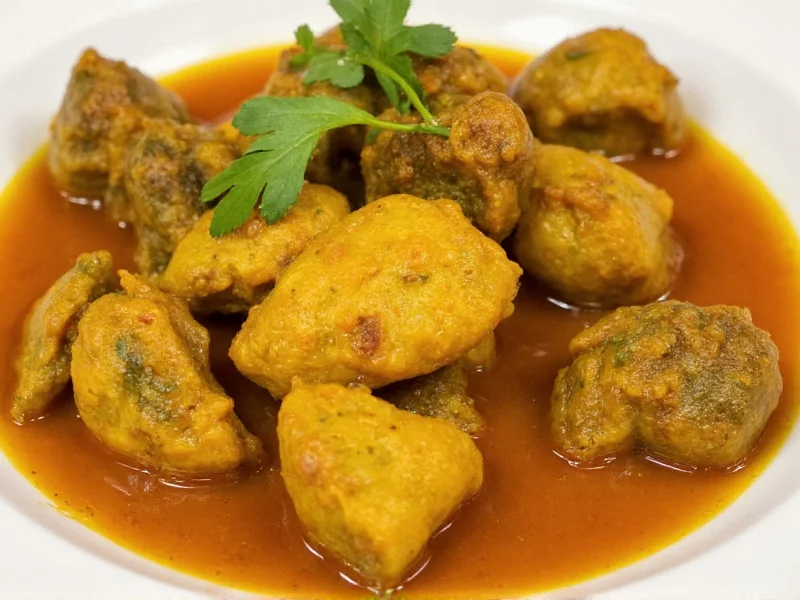Understanding curry's distinctive taste requires examining its fundamental components and regional variations. This comprehensive guide explores what gives curry its unique flavor profile across different culinary traditions.
The Core Elements of Curry Flavor
Curry's taste emerges from a sophisticated blend of spices working in harmony. The foundational 'holy trinity' of curry spices—turmeric, cumin, and coriander—creates the base flavor profile that defines most curry preparations. Turmeric contributes earthy, slightly bitter notes with a distinctive golden hue. Cumin adds warm, nutty depth, while coriander provides citrusy brightness that balances the heavier spices.
Additional elements significantly influence curry taste:
- Fresh aromatics like ginger, garlic, and shallots build complexity
- Chili peppers determine heat level, ranging from mild to intensely spicy
- Acidic components such as tomatoes or tamarind provide balance
- Fat carriers like coconut milk, yogurt, or ghee help distribute flavors
Regional Variations in Curry Taste Profile
The term 'curry' encompasses diverse preparations across Asian cuisines, each with distinctive flavor characteristics. Understanding these differences helps explain why 'what does curry taste like' has no single answer.
| Curry Type | Primary Flavor Notes | Heat Level | Distinctive Ingredients |
|---|---|---|---|
| Indian Curry | Earthy, robust, complex | Moderate to high | Garam masala, mustard seeds, curry leaves |
| Thai Curry | Creamy, aromatic, herbal | Varies by color (red=hottest) | Coconut milk, lemongrass, galangal, kaffir lime |
| Japanese Curry | Mild, slightly sweet, umami | Low to moderate | Roux base, apple, honey, soy sauce |
| Southeast Asian | Bright, tangy, complex | Moderate | Tamarind, shrimp paste, turmeric |
What Gives Curry Its Distinctive Flavor?
The magic of curry taste comes from the Maillard reaction during the 'tadka' or tempering process, where spices bloom in hot oil. This technique releases essential oils from whole spices, creating hundreds of new flavor compounds. The sequence of adding ingredients matters significantly—adding turmeric too early can make it bitter, while blooming mustard seeds creates nutty aromas.
Curry paste preparation also dramatically affects final taste. Traditional stone-ground pastes create more complex flavors than machine-blended versions, as the slower process generates less heat and preserves delicate aromatic compounds.
Common Misconceptions About Curry Taste
Many people mistakenly believe all curry is extremely spicy. In reality, heat level varies dramatically by region and recipe. Japanese curry often has minimal heat, focusing instead on rich umami flavors. Similarly, not all curry contains curry powder—many traditional preparations use freshly ground whole spices instead.
Another misconception is that curry tastes predominantly of turmeric. While turmeric provides color, its flavor is relatively subtle compared to supporting spices like cumin, coriander, and fenugreek that create curry's characteristic depth.
Factors That Influence Curry Flavor Development
Several elements affect what curry tastes like in your final dish:
- Spice freshness – Whole spices retain flavor longer than pre-ground versions
- Cooking time – Longer simmering melds flavors but can dull delicate notes
- Acid balance – Proper acidity (from tomatoes, tamarind, or lime) brightens heavy spices
- Fat content – Higher fat carriers like coconut milk create richer mouthfeel
- Ingredient quality – Fresh curry leaves versus dried makes significant difference
Professional chefs emphasize that the order of operations matters most. Blooming spices in oil before adding liquids unlocks flavors that simply mixing spices with liquid cannot achieve. This technique explains why homemade curry often tastes superior to instant versions.
How to Identify Authentic Curry Flavor
Quality curry should present a balanced flavor profile where no single element dominates. The best curries feature 'layered heat' that builds gradually rather than immediate burn. You should detect multiple flavor dimensions—initial aromatic notes, mid-palate spice complexity, and a lingering finish that invites another bite.
When evaluating curry taste, look for these markers of quality:
- Harmonious spice blend without any single note overpowering
- Appropriate heat level matching the regional style
- Rich mouthfeel from properly incorporated fat
- Depth from properly bloomed spices
- Balance between savory, spicy, and aromatic elements
Understanding these elements helps explain why 'is curry spicy or sweet' isn't a simple question—the answer depends entirely on regional variations and specific recipes.
Frequently Asked Questions
What does traditional curry taste like compared to Western versions?
Traditional curry features complex, layered spice profiles without overwhelming heat, while many Western versions emphasize coconut milk and sweetness. Authentic preparations use freshly ground spices bloomed in oil, creating deeper flavor complexity than Western curry powders.
Why does my homemade curry taste different from restaurant versions?
Restaurant curries often use professional techniques like proper spice blooming, extended simmering, and precise acid balance. The difference between what curry tastes like at home versus restaurants usually comes down to spice preparation order, ingredient quality, and cooking time—not secret ingredients.
Is all curry supposed to be spicy?
No, spice level varies significantly by region. Japanese curry is typically mild with subtle sweetness, while some South Indian varieties can be very hot. The misconception that all curry is extremely spicy comes from Western interpretations that often overemphasize heat.
What gives curry its distinctive yellow color?
Turmeric is primarily responsible for curry's characteristic yellow hue, though saffron may be used in some premium preparations. The intensity of color depends on turmeric quantity and quality—freshly ground turmeric provides more vibrant color than pre-ground versions.











 浙公网安备
33010002000092号
浙公网安备
33010002000092号 浙B2-20120091-4
浙B2-20120091-4